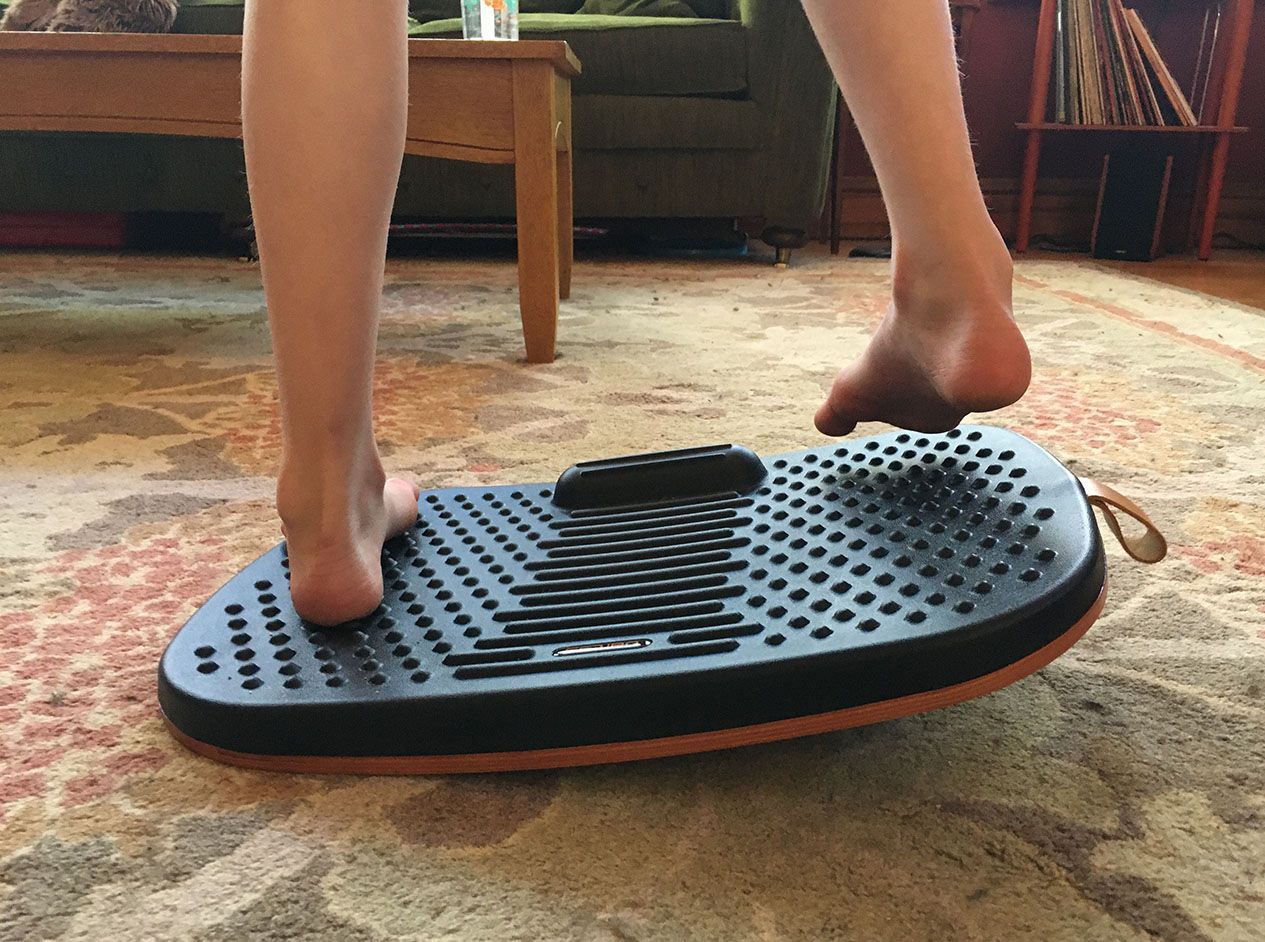Balance board
Wanda's ADHD means she's gotta moooove! Adding a balance board to our homeschooling has been an effective accommodation.

One of my big challenges is keeping Wanda in the same room as me during lessons. Her body needs to be moving. We're not talking wiggles—we're talking great, big orbits through multiple rooms.
It can make lessons... challenging.
Obviously it's challenging for me, continually asking her to please be in the same room as me. But it's far, far more challenging for Wanda. She's meeting a genuine need in her body. If she were to attempt to stand still when her body is saying move, a huge amount of effort would go into that, and it drains her quickly. You know the scene in The Dark Crystal where a gelfling is having its life essence drained? It's like that. I can literally see the drain on her face. It's bad.

A moving Wanda is a thinking Wanda, and that's just how she works. This is part of her natural neurological variation. And honestly, this is why we homeschool: so she can be her full self, listen to what her body truly needs, and not be shamed for it.
On the other hand, if she's not in the same room, she can't see the whiteboard, and she's far more likely to get sucked into a distraction. So that's not ideal, either.
Previous attempts at using wiggle seats or fidgets have been laughably inadequate at meeting Wanda's movement needs. But things change, and I decided recently that it was time to try again. We purchased a balance board for Wanda, the same style used for adults to use all day when working at a standing desk.
Oohdelally, it's been great! She says it makes a huge difference for her. It's much more comfortable to be in one place, and it's much easier for her to focus on the lesson.

There are also simple wooden balance boards designed for children that scoop up much higher at the sides. I'm sure those are also awesome, but I opted for the more shallow, cushioned adult version because I thought the more limited range of motion may work better for helping her focus while still meeting her movement need. Plus, storage is a continual concern here in our li'l San Francisco house, and the shallower board can be tucked out of the way more easily.
She's starting to identify moments where she realizes the balance board will help, and she runs to get it herself—I'm not having to prompt her to try it. That right there: that's a sign of a truly effective accommodation.

